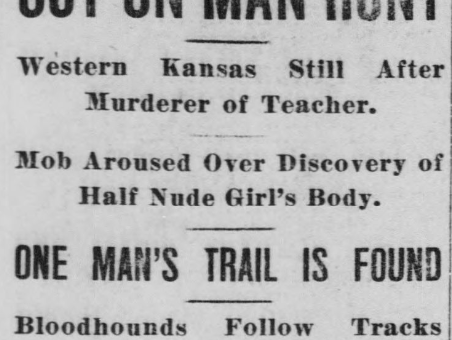
Nellie Byers, a 24 year old school teacher from Grant County, Kansas, left the school house shortly after 4pm on October 22, 1915. She made her way to the boarding house where she lived, but never arrived.
By nightfall, nearly every man in the area set up a search to find the beloved school teacher.
They searched all night, and by morning her body was discovered underneath a pile of leaves and weeds.
All her clothing had been removed except for her sweater jacket that was wrapped around her neck. It was apparent that she had been sexually assaulted.
She was covered in bruises, scratches, and slashes made by a knife. Bite marks were found on her body.
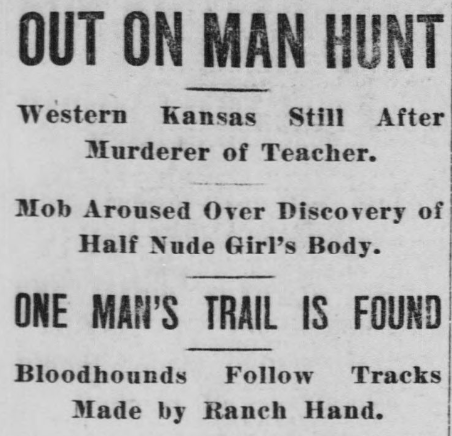
It was obvious that the 160 pound woman, described as having a strong, rugged physique, had put up a fight.
Fingermarks showed on her neck where she had been choked to death.
The entire county was on alert. There hadn’t been a murder in the county in over 20 years.
Bloodhounds were called in from a nearby town.
As the men waited for the bloodhounds, a posse of over 100 men was formed.
The men armed themselves with guns, knives, and ropes. Determined to catch the killer, they blocked off every road leaving the county.
One posse member stated that: “If we catch the murderer of Nellie Byers and are convinced beyond a doubt that he is the guilty man, we will save the county the expense of holding him for trial. There is no capital punishment in Kansas – under the law – and this is a case that merits just one punishment – death.”
When the bloodhounds arrived, the dogs led detectives to a nearby farmhouse where 34 year old Archibald Carlos Sweet was staying and working as a farmhand. It was the Henson farm.
Archie admitted that he had been near the scene of the murder and that he was out hunting rabbits, but said he was innocent of the crime.
Fearing a lynch mob, Archie gave himself over to the police.
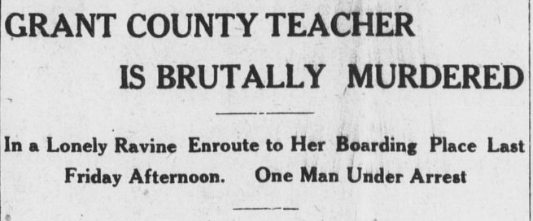
While in custody, Archie’s body was examined by three physicians. No marks, scratches, or bruises were found on his body, although it was apparent by Nellie’s hands that she had fought against her attacker.
Archie’s teeth were checked because whoever bit Nellie had a missing tooth on the left side of his upper jaw.
Plaster of paris impressions were taken from Nellie’s body to be compared with suspects, and Archie’s teeth were not a match.
Archie did not have a missing tooth on the left side and the police stated in a newspaper report on October 25, 1915 that they believed Archibald was innocent.
However, because people were growing more and more angry over the murder of the young school teacher, Archie was taken to Dodge City for his own protection.
A search through Archie’s possessions uncovered a shirt with a few blood stains on the wrist band and a torn sleeve. This was believed to have been physical evidence that Archie had something to do with Nellie’s murder.
A stranger sighted in the area was also being sought after, but was never located.
Three other men at the Henson farmhouse were also arrested, including an ex-convict named Clint Henson, the nephew of the farm’s owner, but the men were soon released after Clint secured an alibi from a 17-year-old boy. It was also reported that Clint Henson had scratches on his face and blood on his clothing.
Shoe prints found near the site of the murder were measured and the measurements matched the measurements of Archie’s shoes.
Meanwhile, Archie admitted to the police that he had been sent to a boys’ reform school when he was 17 for assaulting another girl. He was released from the reform school in 1901.
It was also discovered that he had served time for attempted burglary and for stealing horses.
On October 29, 1915, the Kansas Governor offered a $500 reward for the arrest and conviction of the man who murdered Nellie. The Grant County attorney also stated that he did not believe Archie was guilty of the crime.
Archie was placed in solitary confinement for three weeks.
The police hoped that this treatment would break him and force him to confess to killing Nellie, but it didn’t work.
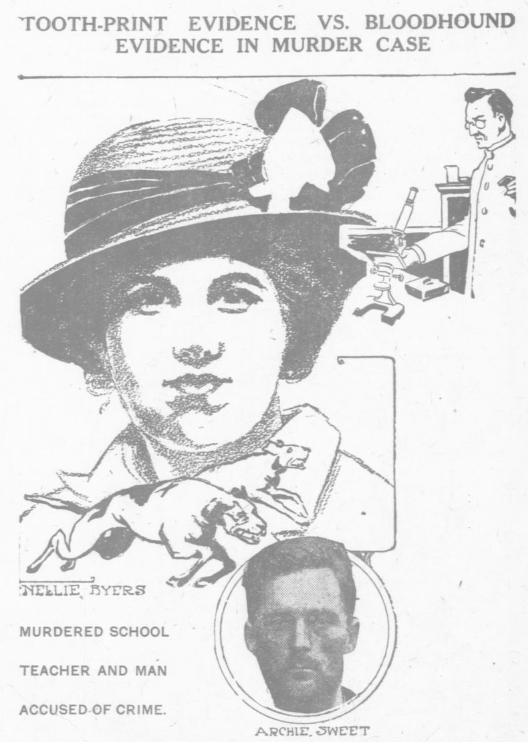
Instead, Archie began begging to be returned to Grant County. He said he was ready to face the mob and that a quick death was far better than lingering in prison.
On November 23, 1915, Archie was formally accused of murdering Nellie Byers and would be returned to Grant County to stand trial.
On January 25, 1916, a Dodge City dentist was asked about the dental evidence in the case. He displayed his collection of bite impressions from Nellie’s body, from Archie, and from Clint Henson.
According to the dentist, teeth marks on a body are not reliable sources of evidence because the skin stretches. In spite of his feelings about teeth impressions made in flesh, the dentist conceded that the bite marks were not made by Archie, but could have been made by Clint Henson. It was again brought up that Henson had an alibi for his whereabouts on the night Nellie was murdered.
The footprints were brought into evidence and Archie stated that Henson had borrowed his shoes that day.
During the trial, the evidence was considered circumstantial. There were no witnesses to the crime, the dental evidence did not match, and the only real proof they had of Archie’s guilt was the bloodhounds.
Archie’s attorneys called for the arrest of Clint Henson and Earl Blake.
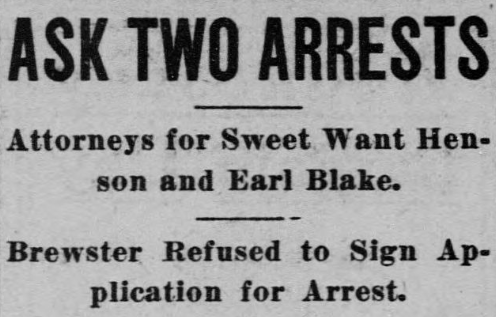
This was one of the first times Earl Blake’s name was mentioned in public. The defense had evidence that Earl Blake had been intimate with Nellie, but his involvement had been kept quiet because he was a clerk of the district court in Grant County.
The request for their arrest was denied, and the evidence of the bloodhounds tracking down Archie won the case for the prosecution.
Archie was given a life sentence for the crime of murder.
His appeal for a new trial was denied in 1918.
Those who have looked back at this case have wondered if maybe the wrong man was convicted of murder. Some people feel that both Archie and Clint might have committed the crime because of the young school teacher’s apparent strength. She might have been able to fight back against one attacker, but not against two.
Some time after Nellie’s death, she became a local ghost legend. People claimed they would see her leave the school house grounds, holding a lamp, and that her spirit would make its way to the place of her final moments.
Sources:
1. The Hays free press. (Hays, Kan.), 06 Nov. 1915. https://chroniclingamerica.loc.gov/lccn/sn84029690/1915-11-06/ed-1/seq-2/
2. Evening star. (Washington, D.C.), 24 Oct. 1915. https://chroniclingamerica.loc.gov/lccn/sn83045462/1915-10-24/ed-1/seq-1/
3. Meade County news. (Meade, Kan.), 28 Oct. 1915. https://chroniclingamerica.loc.gov/lccn/sn85030287/1915-10-28/ed-1/seq-1/
4. The Topeka state journal. (Topeka, Kan.), 29 Oct. 1915. https://chroniclingamerica.loc.gov/lccn/sn82016014/1915-10-29/ed-1/seq-1/
5. Meade County news. (Meade, Kan.), 03 Feb. 1916. https://chroniclingamerica.loc.gov/lccn/sn85030287/1916-02-03/ed-1/seq-1/
6. The Topeka state journal. (Topeka, Kan.), 23 May 1916. https://chroniclingamerica.loc.gov/lccn/sn82016014/1916-05-23/ed-1/seq-6/

